During the first Republican primary debate of the 2024 season, candidates Vivek Ramaswamy and Nikki Haley clashed over the topic of the Russo-Ukraine War. Haley came to the defense of the Biden administration’s policy, claiming that the costly aid for Ukraine (up to $135 billion and counting) in their effort against Russia is crucial for defending the security of U.S. and NATO. Ramaswamy on the other hand took an isolationist, “America-first” approach to the subject, resolutely affirming that he would not give Ukraine aid if elected president.
Why is NATO support so high on the list of priorities for some politicians? Why did NATO come into existence, and what is its future? Patrick Bet-David sat down this week to deliver a video on the politics and history of NATO. Here are some insights from his deep-dive into the issue.
NATO, or the North Atlantic Treaty Organization, is a political and military alliance between 31 member states including the United States, the United Kingdom, Germany, France, and Turkey. It was formed in 1949 in the aftermath of WWII to secure peace and stability in Europe by granting collective security to all its members: if a country were to attack one of the NATO members, all other members would declare war on that belligerent in retaliation. It worked as a check on the newly ascendant Soviet Union and served to balance out the power relations of global politics.
Learn the benefits of becoming a Valuetainment Member and subscribe today!
NATO’s history has not been simple. France, one of the first countries to sign the treaty, withdrew from the military pact in 1966 (while remaining an ally) only to return in 2009. NATO had to accept only one half of Germany in 1955 as East Germany was still under Soviet rule. East Germany was accepted when the country eventually reunified in 1990. The Soviet Union then dissolved in 1991, leading its former allies to seek entry into NATO. Previous members of the Warsaw Pact (the Soviet version of NATO) like the Czech Republic, Hungary, and Poland all joined in 1999. Since then, about a dozen Eastern European, Baltic, and Scandinavian countries, many of them former Soviet republics or neutral lands, joined the pact and effectively declared their allegiance to the West.
NATO’s reach, therefore, has increasingly encroached on the border of the Russian Federation. Why is NATO choosing to expand in this direction, and what is their intention?

NATO’s expansion and meddling in the Ukrainian conflict puts Russia in a difficult position, where they will be blamed for retaliating but also cannot afford to merely watch without doing anything. As PBD put it, “Russia is now sitting there saying, “NATO, what plans do you have here? What are you trying to do? It’s almost as if you’re trying to push me to have to do something and take action against Ukraine, Poland and some of these other countries.”
On July 11, 2023, NATO leaders agreed to waive the Membership Action Plan requirement in order to expedite Ukraine’s admittance to the Alliance. This is particularly frustrating for Russia, as many parts of Ukraine used to be Russian territory. Even if one stands firmly against Russia’s choice to invade Ukraine in early 2022, some critics have argued this push is a bad idea in the interests of preventing WWIII. Things are already escalating with Putin’s former close friend Yevgeny Prigozhin reportedly turning up dead in August after he had declared a rebellion on Russian military forces in June. Could NATO be pushing an infuriated Putin closer to declaring a world war?
(RELATED: New Video Suggesting Wagner Leader Prigozhin Could Be Alive Sparks Debate)
According to Article 5 of the NATO founding treaty, an attack on one member is an attack on all:
The Parties agree that an armed attack against one or more of them in Europe or North America shall be considered an attack against them all and consequently they agree that, if such an armed attack occurs, each of them, in exercise of the right of individual or collective self-defence recognized by Article 51 of the Charter of the United Nations, will assist the Party or Parties so attacked by taking forthwith, individually and in concert with the other Parties, such action as it deems necessary, including the use of armed force, to restore and maintain the security of the North Atlantic area.
If Ukraine becomes a member of NATO, and Russia continues to inflict damage on them, all members of NATO—the United States included—will have to engage in direct conflict, inevitably launching a third world war and possibly a nuclear war.
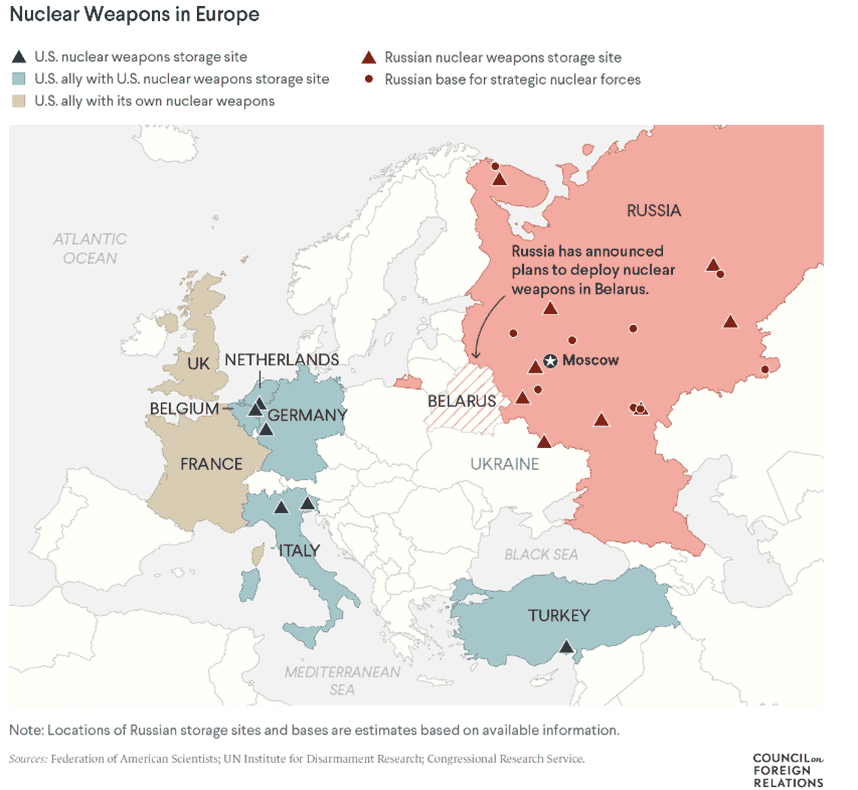
The fact that NATO’s aggression is so close to causing a global war makes it hard to defend the organization. This is especially the case when one considers the enormous costs NATO incurs on its members, with its $3.7 billion annual budget (the largest share of the burden falling on the United States, which contributes 16% despite being only one of 31 members) and the fact that its original purpose can no longer be used as a justification for its existence, seeing as the Cold War is over.
Not only does the United States contribute more to NATO than any other member, it also expends the largest percentage of its real national GDP (3.47%) compared to the others in proportion.
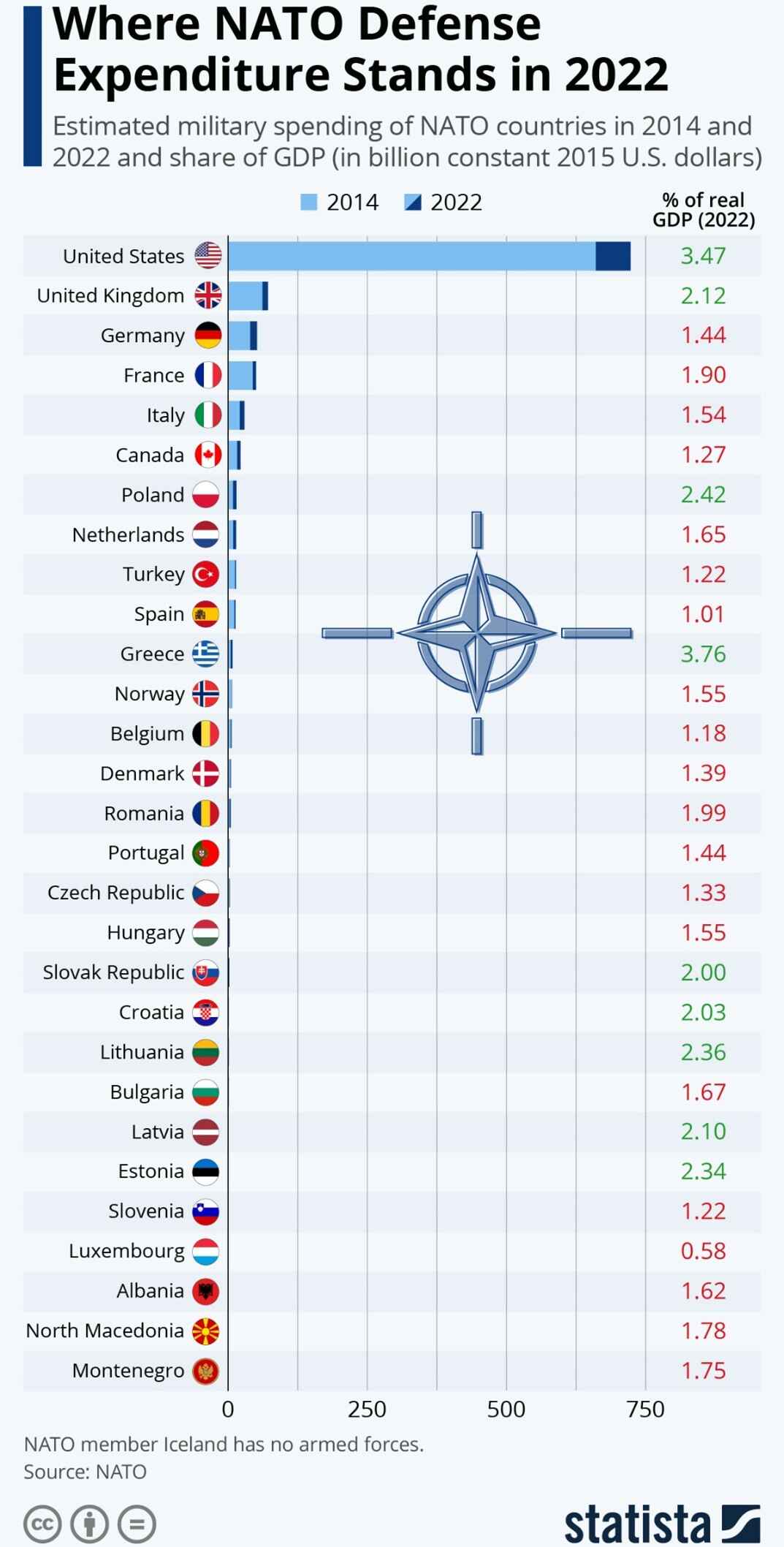
The U.S. contributes 11 times more than the second largest contributor, the United Kingdom. The U.S. spends $811 billion while the U.K. spends $73 billion. Germany comes in third contributing $63 billion. France contributes $57 billion, Italy $33 billion, and Canada $27 billion.
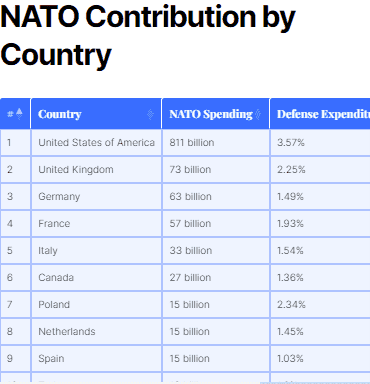
Meanwhile, a kind of parallel NATO is emerging with the rise of BRICS (Brazil, Russia, India, China, South Africa). While BRICS is a trade alliance rather than a military one, it is still in its early stages of development and could mature into a military alliance in the future. While NATO countries collectively have a stronger GDP, BRICS has a larger share of the world population and includes the second and third strongest militaries in the world, China’s and Russia’s. Additionally, Iran receives investments from China and is effectively tied to BRICS because of this.
(RELATED: BRICS Adds Six New Members to Anti-West Coalition)
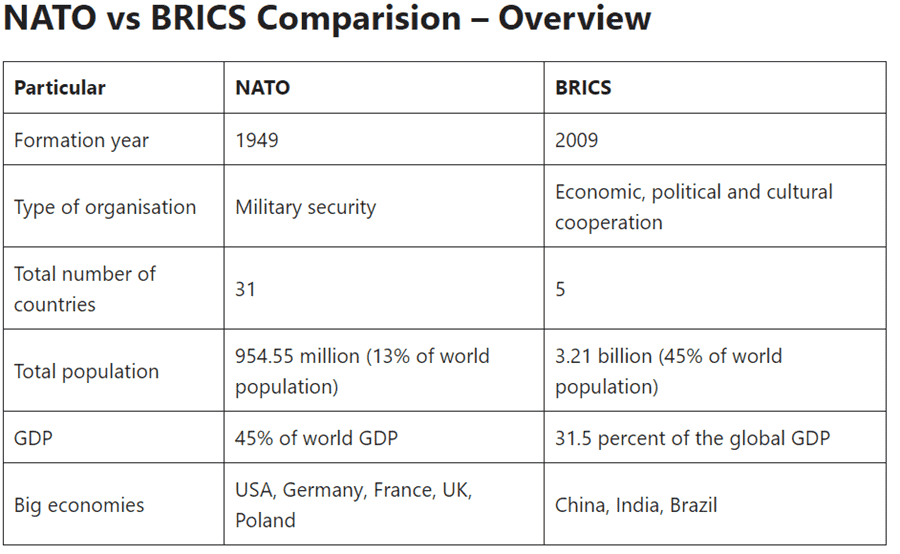
If a nuclear war were to ever break out between the NATO countries and the BRICS countries, roughly 70% of the world’s population would die either from impact of the blasts or from starvation and aftermath.
In a non-nuclear scenario, the United States would have a low chance of being invaded due to its dual oceans separating it from Russia and China, and due to the fact that its military has significant defensive advantages such as possessing the most aircraft carriers in the world by far and having an advanced sonar system for detecting submarines and other underwater threats. Nevertheless, Russia and China could potentially engage in biowarfare, cyberwarfare, or any number of covert lethal attacks that would circumvent our traditional modes of defense.
In the end, however, it would be ideal for all sides to avoid a third world war. As PBD argues in the video, we cannot ultimately trust every one of our NATO allies anymore than we can trust the BRICS countries, as they often have distaste for American culture and resent the size and scope of our imperial influence. While we think we are earning forever friends by pouring funds into foreign conflicts, history has shown there are no permanent alliances. We would do better to invest in ourselves rather than our envious so-called friends by picking fights with their bullies.
“I think its best we as Americans stay paranoid with anybody whose number one priority in their lives is not America. And we keep America as number one priority, over Ukraine, over relationship with Russia or China or any of that. Let’s lead with “America First,” and then comes everybody else, instead of trying to solve everyone’s problems and create unnecessary enemies,” Pat concluded.

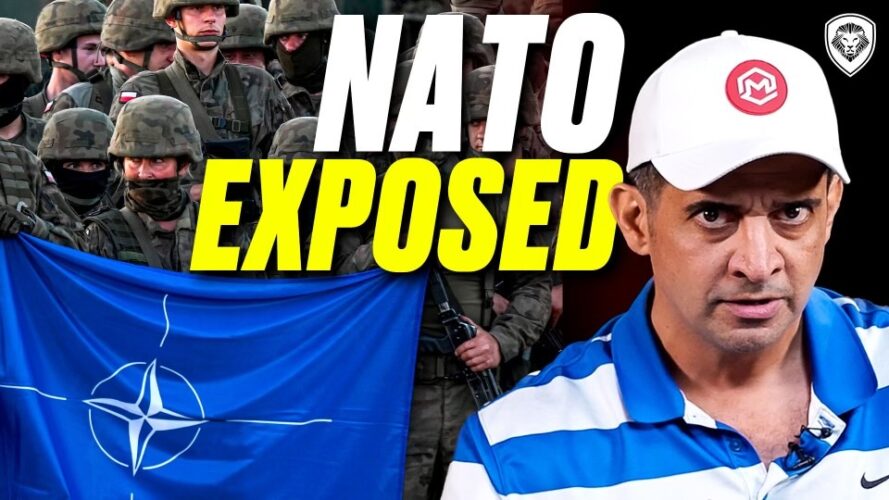








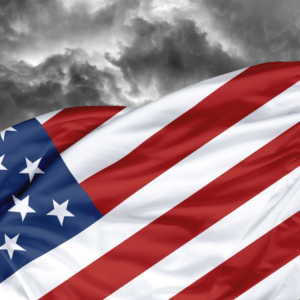






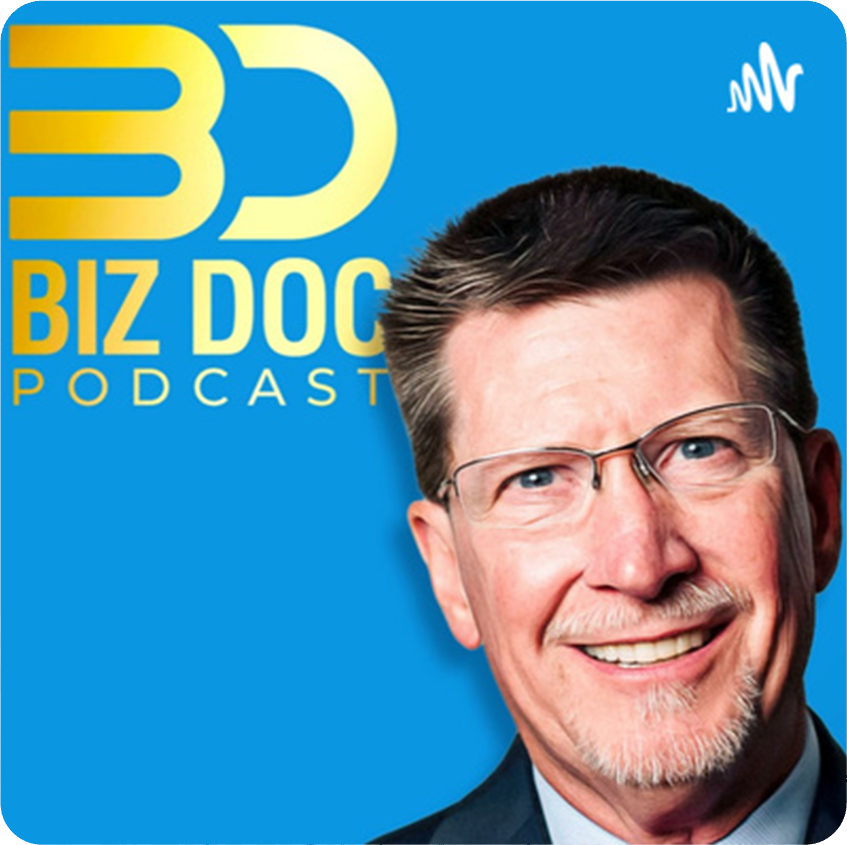
Add comment